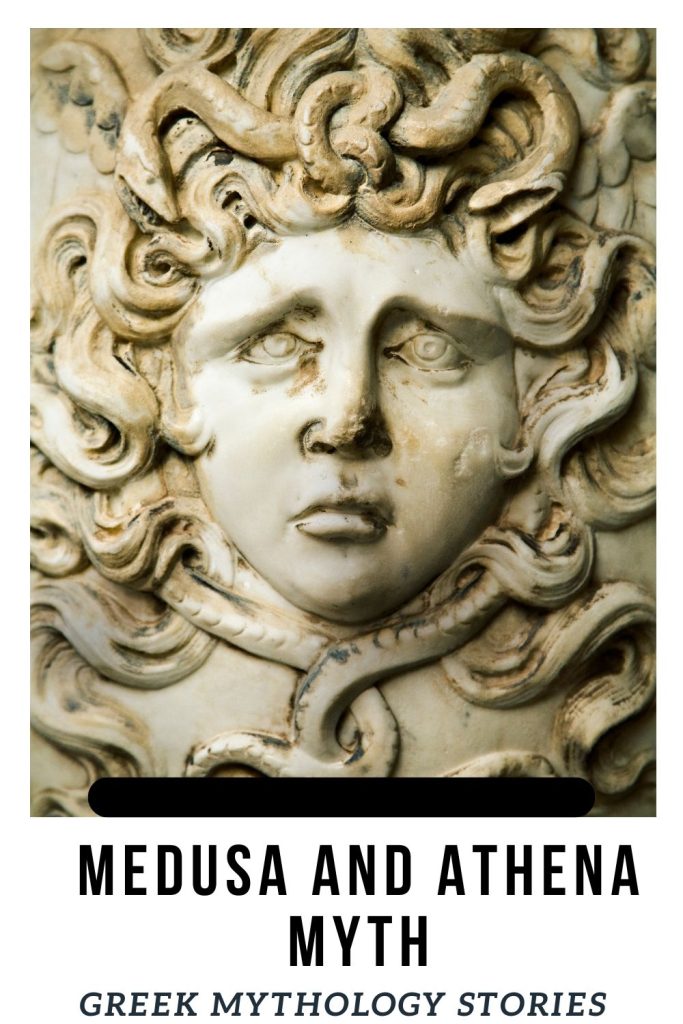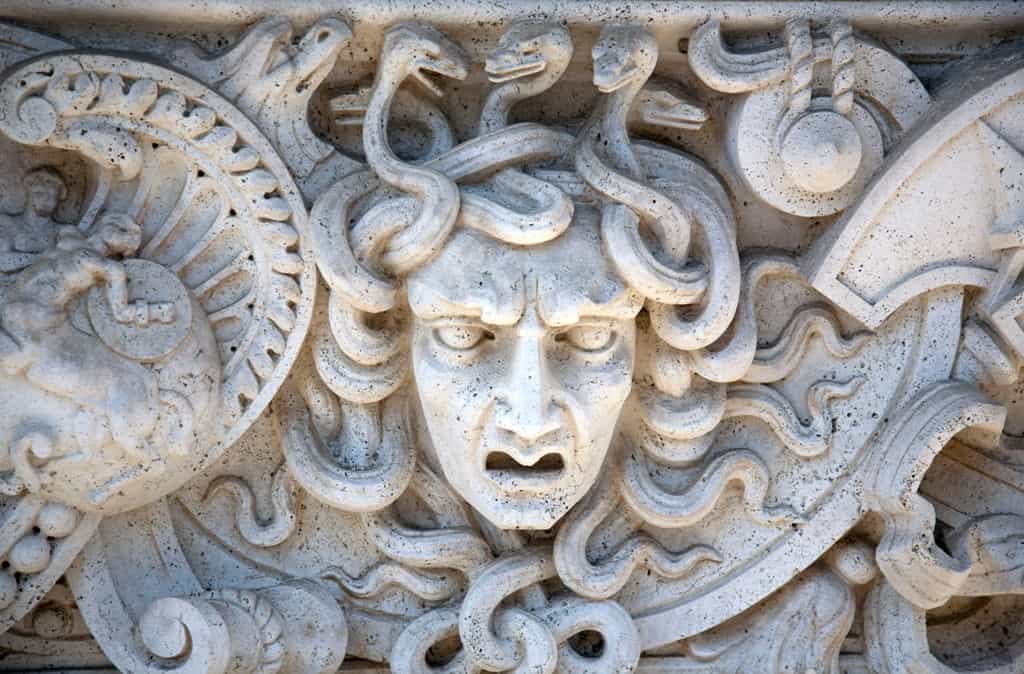Medusa is one of the most recognizable pop culture and fashion icons!
Her powerful image of a woman with a full head of snake hair is unforgettable. Her power to turn a mortal (or a man, depending on the myth) into stone with a single glance has allured and inspired artists and even activists and social scientists for centuries!
But who was Medusa, and how did she end up a monster for Perseus to kill?
That depends on who you ask! The original Ancient Greek myths describe Medusa as the only mortal sister out of three Gorgons. She also had the name Gorgo, and like her sisters, she was born with a monstrous appearance: Snake hair, a terrible face that struck fear into the heart of anyone who looked at them, wings, and a reptilian body were featured by all three sisters.
According to Hesiod and Aeschylus, she lived in a town on the coast of Aeolis, in Asia Minor, opposite the island of Lesbos. She was a priestess of Athena all her life.
But if you ask Ovid, the Roman poet who lived during the reign of the Roman emperor Augustus, the story is entirely different- and it’s Athena’s fault.

The Story of Medusa and Athena
What is the story of Medusa and Athena according to Ovid?
According to Ovid, Medusa originally was a beautiful young woman.
She had stunning golden hair, with perfect ringlets framing her beautiful face. Her features were in perfect symmetry, her lips red like the purest wine.
Medusa is said to have been coveted across the land. She had many suitors, but she wouldn’t choose one, all wanting her hand in marriage, won over by her rare beauty. So beautiful was she, that the god Poseidon also desired to have her.
But Medusa wouldn’t yield to any man. And, to Poseidon’s consternation, she wouldn’t give herself to him either.
Poseidon was angered, and his desire for her grew even more. But it was very hard to find Medusa on her own. She was always surrounded by her friends or family, and so it was impossible for him to make any kind of move.
But there came one day when Medusa went to Athena’s temple to give offerings. She was alone during that time, and that’s when Poseidon seized his chance. He accosted Medusa in Athena’s temple, once again asking for her affections.
When Medusa refused, Poseidon pinned her against Athena’s altar and had his way with her anyway.
Athena was enraged that a rape took place in her temple, but she couldn’t punish Poseidon for it. In her fit of anger, she carried out her revenge on Medusa, cursing her. Medusa immediately fell to the ground. Her beautiful flaxen hair fell off, and in its place horrible, venomous snakes grew, covering all her head. Her face didn’t lose its beauty, but instead of charm, it inspired terror in the hearts of mortals.
The young woman wailed in horror, as Athena further said, completing her curse:
“From now on and forever, whoever gazes upon you, whomever you see, will be turned into stone.”
Horrified, grieved, and frightened, Medusa hid her face with her shawl and fled from the temple and her town, to be isolated and avoid people. Enraged by what happened to her, she vowed to turn to stone any man who would venture into her lair ever since.
Another version of this tale has Poseidon and Medusa being lovers, instead of Poseidon pursuing her without success. In the version where Poseidon and Medusa are a couple, they are fervent lovers, full of passion and celebration of their love.
One day, they were passing through a very romantic forest of olives which was Athena’s temple. Inspired, they went to the temple and had sex on the altar. Athena was enraged at the disrespect to her shrine and took her revenge.
Again, because she couldn’t punish Poseidon for insolence, she only took it out on Medusa cursing her. In this version, Medusa is angry at all men because Poseidon didn’t defend or protect her from Athena’s wrath, letting her be transformed into a monster.
What is the story of Medusa and Athena all about?
It depends on the version!
If we consider the version where Poseidon violated Medusa, but only Medusa got punished, we have a tale of oppression: Athena represents the powerful who only mete out punishment to the weak, not those who hold the same power as them.
Later, seen through the lens of feminism, the myth was taken to represent the patriarchic structure of traditional society, where men go unpunished for the abuse they commit, while women are doubly punished: they are the victims also receiving the punishment of their aggressor.
If, however, we consider the version where Poseidon and Medusa were willing lovers, the myth reads as a cautionary tale: insolence to the gods, or disrespect of what is considered sacred, leads to perdition.
There is again the double standard of Poseidon not being punished because he was Athena’s equal, but there is also a sense of culpability that Medusa shares since she agrees to have sex on a sacred altar.
We could even take her transformation into a monster as allegorical rather than factual: a person who has no regard for what others consider sacred, a person who crosses lines without much thought, is one that turns into a monster.
A monster that fills his/her environment with venom (hence the venomous snake hair) and who causes everyone around them to be hurt (hence the turning into stone anyone who comes near).
What does Medusa’s name mean?
Medusa comes from the Ancient Greek word “μέδω” (pronounced MEdo) which means “to guard, to protect” and her other name, Gorgo, means “swift”.
Medusa’s name is closely connected to the original Ancient Greek myth, which is also the story of Perseus, rather than Ovid’s origin story. Medusa’s head was featured on Athena’s shield, and it was said to provide swift death and complete protection from anyone who dared attack her- exactly what her name describes!
But how her head ended up on Athena’s shield is a story for another time.

